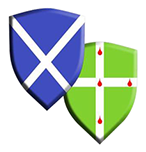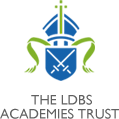Helping your child at home
Reading
The aim is to help each child to be able to read fluently and with understanding so that reading becomes a source of real pleasure and enjoyment.
Children should learn to read, then read to learn.
Reading is a complex skill which is taught thoroughly and systematically at St Andrew and St Francis. We start developing a love of reading in the Nursery by introducing an exciting range of books to the children. They learn to love and know key authors by making props for stories, acting out stories and enjoying the fun and rich language of stories. All children take books home from their classroom to share with parents in every year group.
As reading schemes become more complex, their reading progresses. Phonic awareness is introduced in Nursery and in Reception. The Read Write Inc (RWI) scheme is used to support reading development until they are proficient. Comprehension is the ultimate goal of reading and to ensure that this is taught, pupils from Y2-Y6 learn through Destination Reader sessions. In small groups, the children are taught to use reading behaviours to support their comprehension. Reading is also taught at every opportunity throughout the curriculum.

At the beginning of learning to read, every child is expected to read and be read to every night. Reading children stories is the best and most enjoyable way of introducing them to new vocabulary and concepts which help them with all their learning. The length of time a child is expected to read for increases with age. A young child will need to read to an adult for short periods every night, where as an older child will be expected to read on their own in a quiet environment and then talk about what they have read.
Children take 2 books home weekly; one book is from their RWI level / PM benchmark reading scheme and the other book is of their choice from the class library.
From Year 2 children also have the opportunity to borrow a book from the school library.
In Early Years and KS1, parents can communicate with their class teacher on children's reading through the SASF Reading Journal Diaries. (See your class teacher if you do not have a Reading Journal.)
PHONICS
At SASF we use the phonics scheme 'Read Write Inc'. Children learn to identify sounds they use when they speak, recognise the common spellings of each sound, blend sounds into words for reading and segment words into phonemes for spelling. This involves teaching sounds first and then the name of the letter.
Whilst children work within the phase that is appropriate to their level of learning, they may also be given experiences of other phases to support future learning or secure previous understanding. The children are regularly assess to ensure that their needs are being met.
Children in the Nursery should learn to:
- show an awareness of rhyme, rhythm and alliteration
- distinguish between environmental sounds, instrumental sounds and body percussion
- orally blend and segment sounds and words
- explore and experiment with sounds
The children will learn these skills through exploring the world around them with listening walks, songs, games, stories and instruments.
Children in the Reception should learn to:
- use common consonants and vowels
- blend and segment with letters
- read and spell a wide range of VC and CVC words
- learn 'tricky words' that cannot be segmented
- understand that words are constructed from sounds (phonemes) and that these are represented by letters (graphemes)
- use at least one grapheme for each of the 44 phonemes
As well as using games, rhyme, songs and stories to understand and develop these skills, phonics will be taught through a daily 15 minute session. These sessions are structured as:
Revisit and Review
Teach
Practise
Apply
Children in the Year 1 should learn to consolidate their previous learning. There are no new graphemes taught but instead children learn to:
- read and spell more 'tricky words'
- segment adjacent consonants in words and apply this in spelling
- blend adjacent consonants in words and apply this skills when reading unfamiliar texts.
- read phonetically decodable 2 and 3 syllable words
- use alternative ways to pronounce and spell the graphemes, including long vowel sounds
- make phonetically plausible attempts to spell complex words.
At the end of Y1 all children nationally are screened to assess their phonetic knowledge. The assessment is made up of real words as well as made-up “whacky words”. Your child’s phonic score will be included with their annual report.
Pupils who are unable to read the expected number of words (32/40 in 2015) at the end of Y1 will continue to receive targeted phonics teaching in Y2. They will redo the phonics screen at the end of the Y2.
From Year 2 through to Year 6, children develop their understanding and knowledge of spelling. This will include:
- the use of prefixes and suffixes
- plurals
- spelling rules and their exceptions
- contractions
- homophones
- etymology (the origin or words)
Children will be given spellings to practise each week. These will be used and applied through their early work each morning linked to grammar, punctuation, handwriting and dictation. Although no formal test will be done, it is important that children spend the time at home to understand the spellings.
Click here for the spelling expectations from Reception to Year 6, including the Year 3/4 word list and Year 5/6 word list.
How you can help at home
- Use the sounding out strategy to support your child to try to read or write a word.
- Read every day with and to your child.
- Keep reading as a relaxed and enjoyable time you share.
- Praise all attempts to read and see the teacher if you have any concerns.




